Guide To Buying A Weightlifting Belt
Weightlifting belts are a useful tool to help you perform heavy lifts safely. They work by stabilizing your spine and keeping your core tight by giving it something against which it can push out. If you regularly do heavy squats or deadlifts, you should consider buying a weightlifting belt.
Product Comparison Table
What To Look for
30/03/2020
The belt’s width must be equal in the front and back.
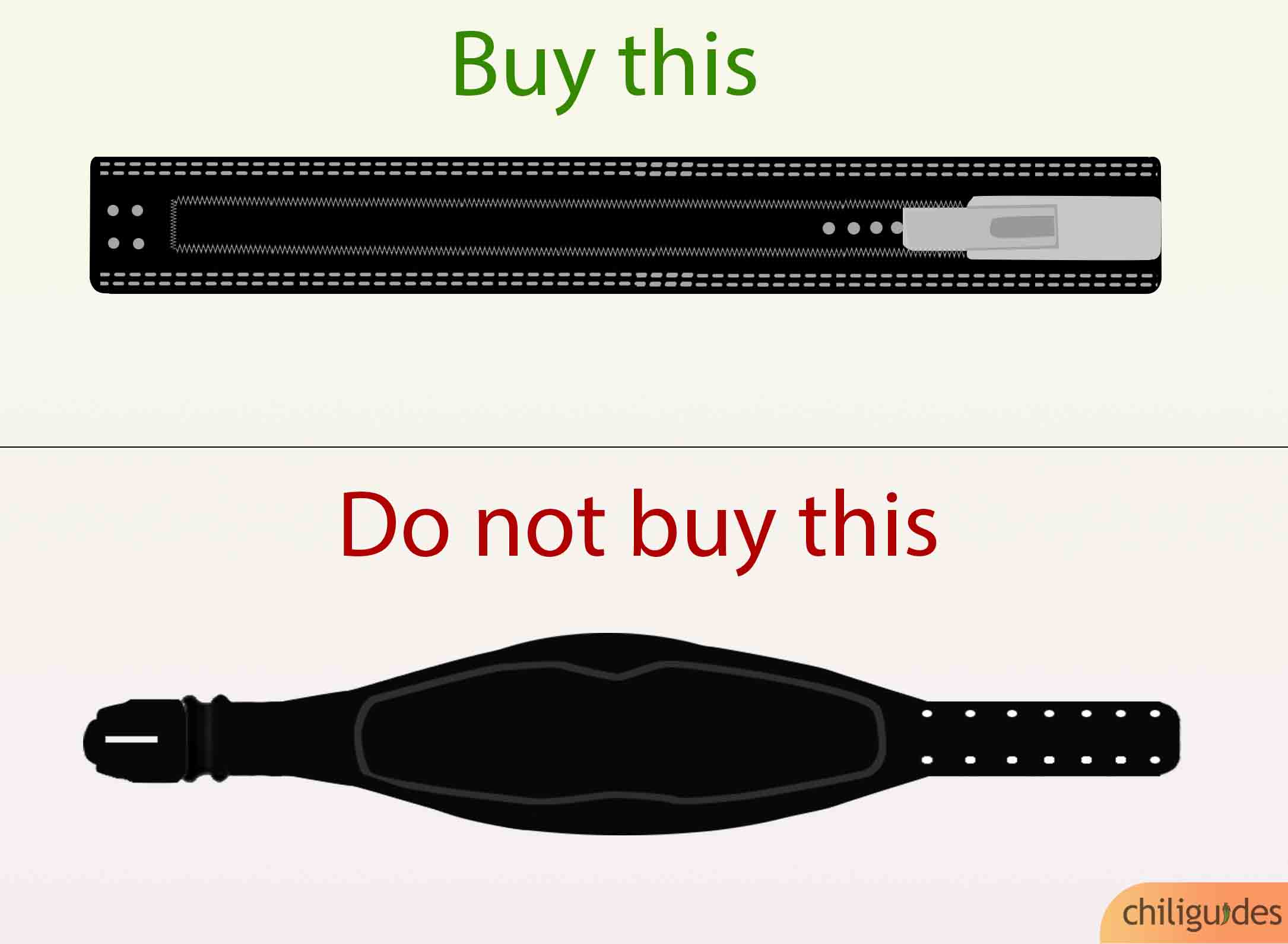


- You do not want to buy a belt that is bigger in the back than it is in the front since that won’t effectively stabilize your torso and can lead to injury. Therefore, go for a belt that has a uniform width all around.
- The width can be between 3-4 inches, depending on your height. Keep in mind that many powerlifting competitions have regulations banning belts beyond a certain width.
- Furthermore, don’t forget to measure your waist before selecting a belt to prevent ending up with the wrong size.
Use a lever or prong fastener.
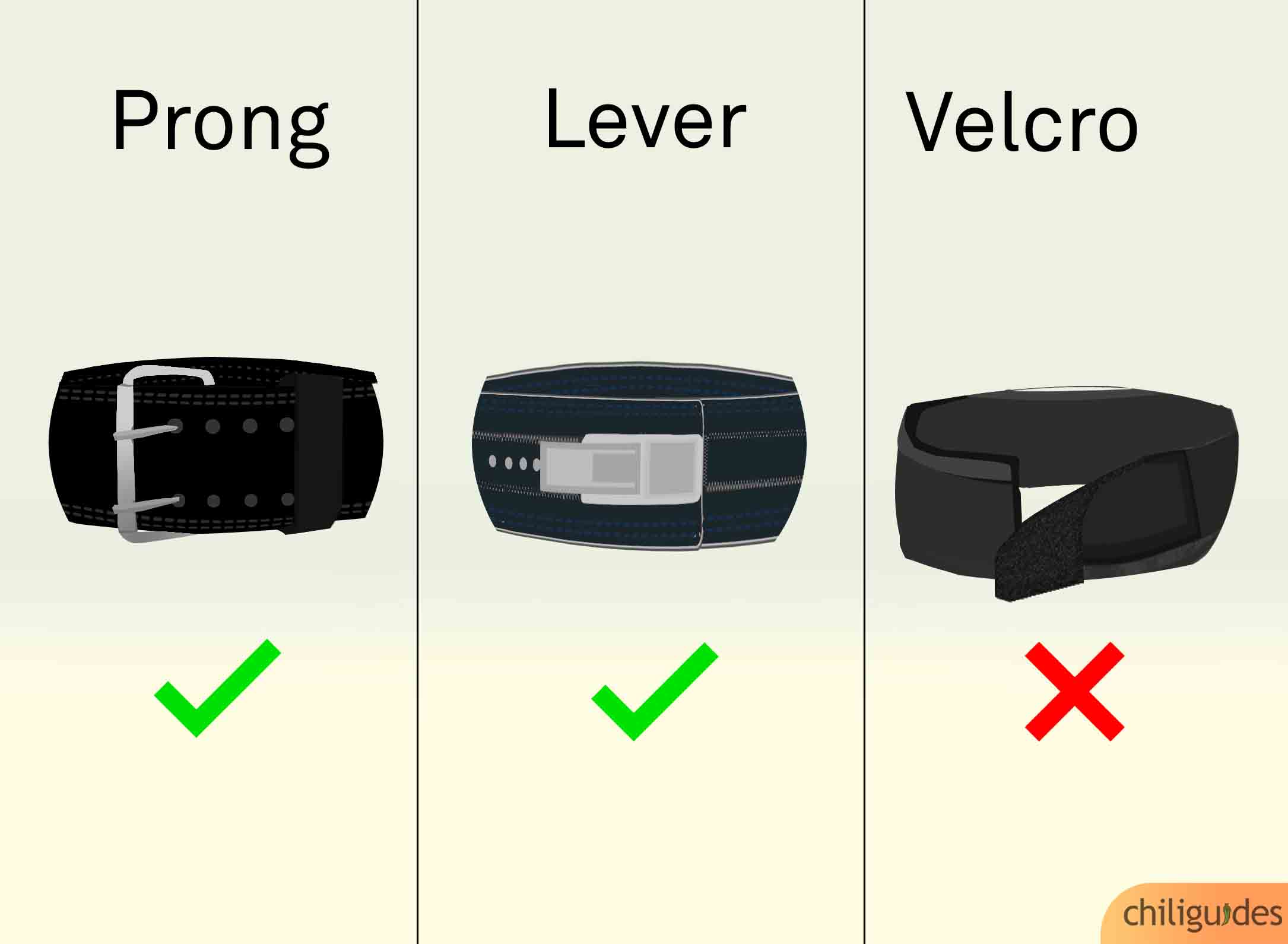


- You can fasten the belt using a lever, Velcro, or prong(s).
- It is best to use a lever or a single or double prong as these closures will firmly hold the belt in place when your core is exerting pressure against the belt.
- Velcro is weaker than levers and prongs and has a chance of opening during the exercise, which could potentially result in injury.
Test the thickness, and get “top grain leather”.
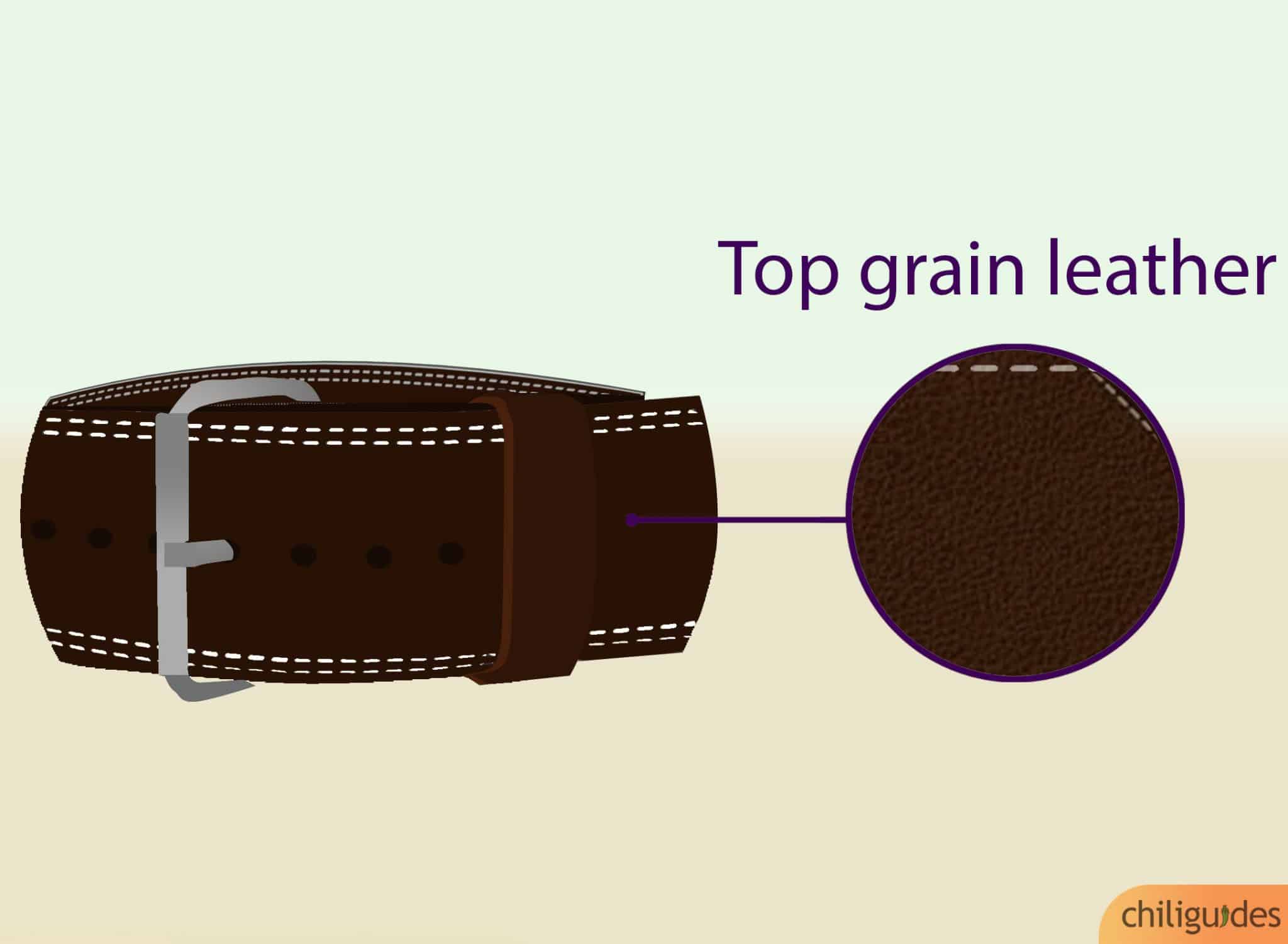


- The maximum thickness in a weightlifting belt is usually 0.5 inches, which should be comfortable enough for most people but if you find it difficult to use you can switch to a 0.4-inch belt.
- There are typically many different types of leather to choose from, but from a durability standpoint, it is a good idea to get a ‘top grain leather’ belt as tend to they last longer.
Top Picks
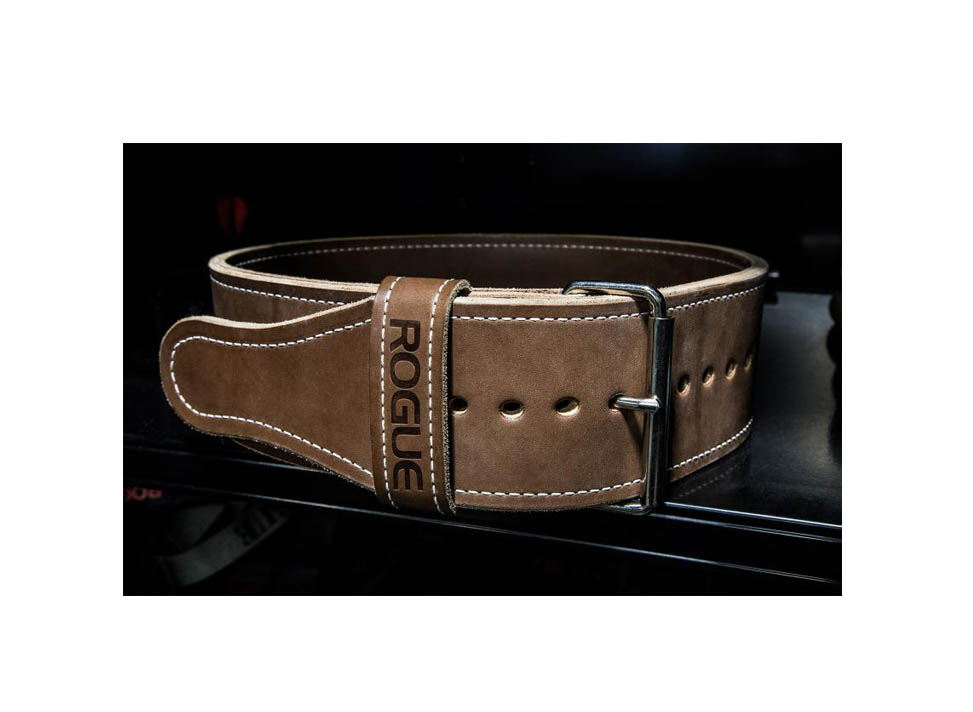


Best Weightlifting Belt For Powerlifting
ROGUE OHIO LIFTING BELT
For $110.00
- Highly stable
- Aesthetic look and feel
- Designer belt level stitching but stronger
- It will buy you some respect with your gym buddies
- Expensive
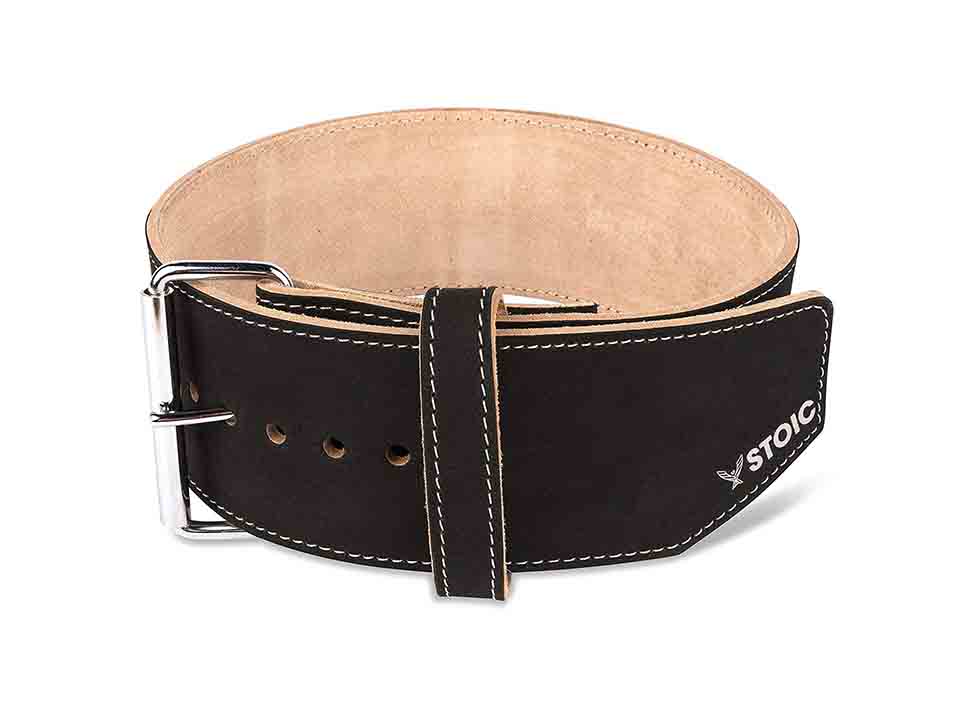


Best Weightlifting Belt For Powerlifting
Stoic Powerlifting Belt
For $67.99
- Provides considerable stability
- Suede on leather ensures durability
- Strong single prong doesn’t loosen while lifting
- Might be too wide for shorter individuals
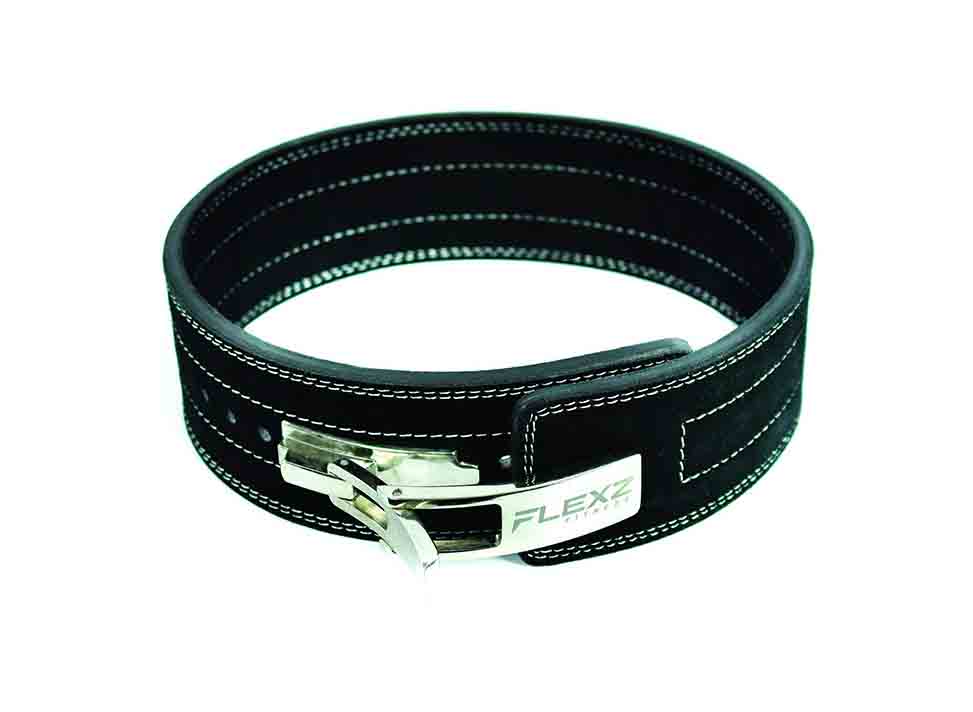


Best Lever Weightlifting Belt
Flexz Fitness Lever Buckle Powerlifting Belt
For $54.99
- Unmatched stability
- Lifetime guarantee on lever
- Excellent craftsmanship
- Can be too thick for some individuals
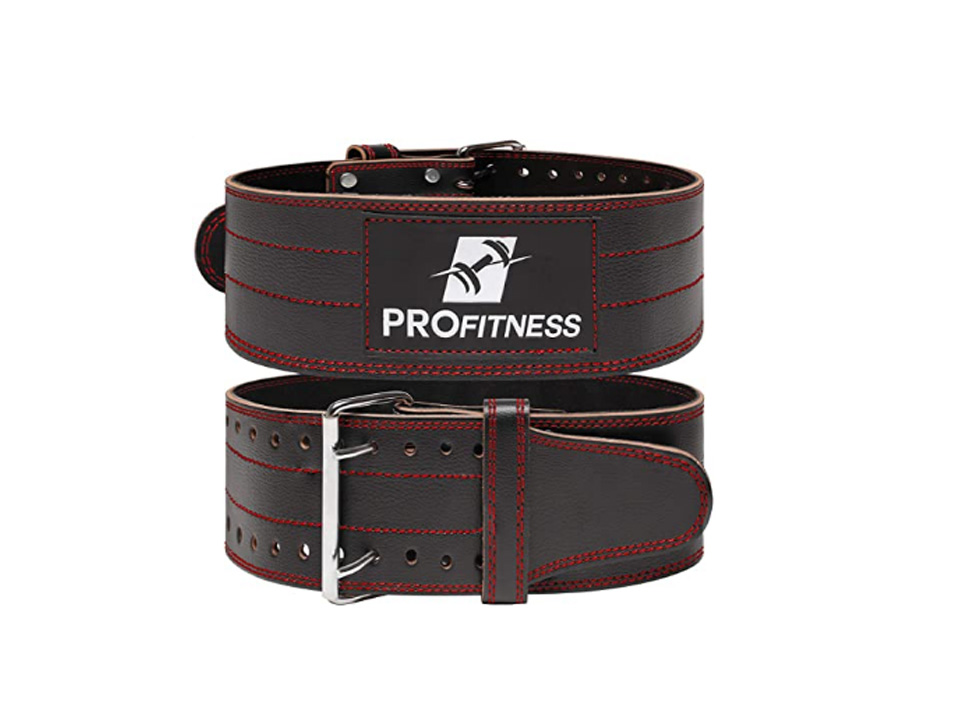


Best Leather Weightlifting Belt
ProFitness Genuine Leather Workout Belt
For $39.95
- Comfortable soft leather build
- 4 inches wide for reinforced support
- Lifetime warranty
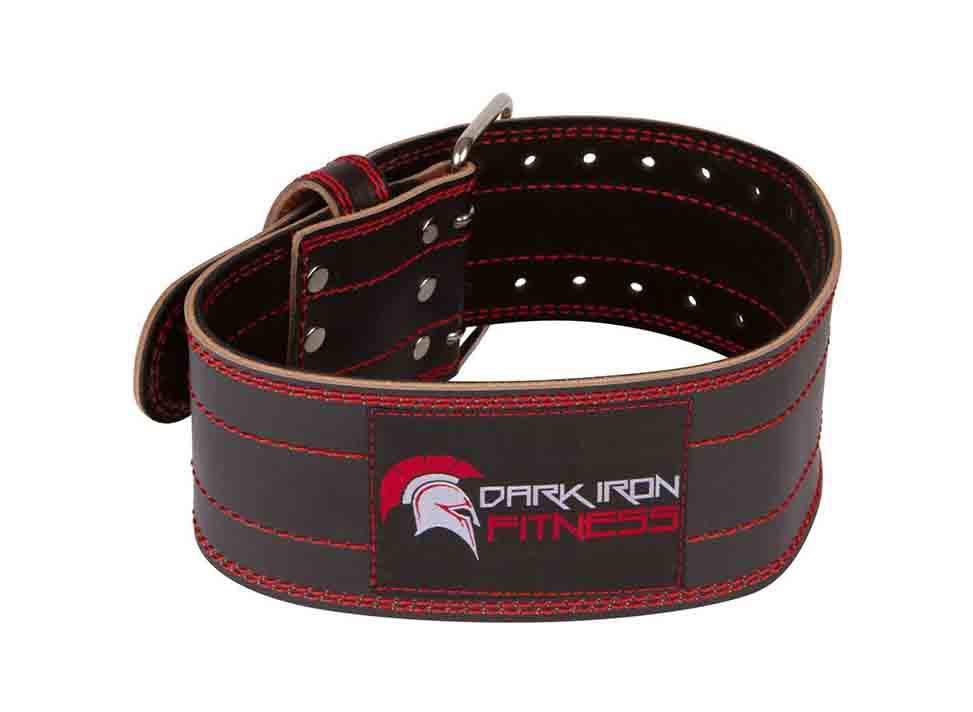


Best Weightlifting Belt For Bodybuilding
Dark Iron Fitness Genuine Leather Pro Weight Lifting Belt
For $39.99
- Will last you a lifetime
- Doesn't push into hips or ribs while lifting
- Lifetime replacement warranty
Common Questions
Q:Why should I wear a weightlifting belt?
Some heavy lifting exercises such as deadlifts put a lot of pressure on your spine and core. Your torso automatically braces itself when you’re doing these activities, but your spine bears all the brunt. A weightlifting belt helps you brace for this heavy lifting by compressing your abdominal cavity.
Q:Will the weightlifting belt give me extra strength?
The belt doesn’t give you extra strength and lifting ability. It’s a secondary support mechanism that compresses your abdomen and gives you something to push out against so that you can brace. You won’t suddenly get superhuman strength to lift significantly more weights. However, by bracing your torso and stabilizing your body, continued use of the belt will help you increase your rep count and even allow you to move to heavier weights.
Q:How to wear a weightlifting belt?
Make sure that the belt fits you well; it should be tight but not overly so. Ideally, you should wear the belt so that it’s just over your navel. You can adjust the position if it feels like the belt is digging into your ribs during exercise.
Q:When should I use a weightlifting belt?
Use it only when there’s a heavy load on your spine. Remember that a weightlifting belt is a tool, not a crutch. The exercises that require a weightlifting belt are squats, deadlifts, bent-over rows, and Olympic lifts. Due to the added support on your abs, the weightlifting belt helps you squeeze out 2 or 3 more reps, provided your technique is correct. By improving your body’s biomechanics, the belt helps you break performance plateaus.
Q:When should I not wear a weightlifting belt?
- Don’t use a weightlifting belt for every exercise. You don’t need a weightlifting belt for other exercises like curls, extensions, presses, etc.
- Don’t use a weightlifting belt if you suffer from high blood pressure or conditions such as a hernia.
- If you aren’t confident about your lifting technique yet, do not use the belt. Perfect your form first and then start using the belt.
- Use the belt sparingly, only when you feel that you need extra support during big lifts.
Q:What is the Valsalva maneuver and how can I use the weightlifting belt to increase its efficacy?
It’s a breathing technique that increases pressure on your chest. Lifters use this maneuver to stiffen their torso when they’re lifting heavy weights. Here’s how you do it:
- Inhale deeply into your belly and then hold your breath.
- Elevate the pressure against your core by bearing down on your stomach muscles, as you would do while straining during a bowel movement.
- After holding this position for about 10 seconds, breathe out forcibly.
When you perform this technique while weightlifting, a belt would help constrict your core muscles more and help give your torso the strength to lift better. It is vital to use proper form when doing this to avoid the risk of injury.
Q:How is a weightlifting belt different from a weighted belt?
The weightlifting belt is a tool that helps you brace your abdomen and eases the pressure off your spine when you perform heavy exercises such as deadlifts and squats.
A weighted belt, on the other hand, has a chain, and you can add weighted plates on it. You then wear the belt and perform exercises like dips and chin-ups. By adding the extra weight, you put more stress on the muscles you’re trying to target. So, if you wish to train for maximum strength and test the limits of your body, you can add as much weight to the belt as you wish.
Q:Do weightlifting belts help build abs?
Not exactly. Weightlifting belts help stabilize and strengthen your core, but they will not help you get a six pack. You mostly use these belts to perform exercises like deadlifts and squats to get the stability your body needs when lifting heavy loads.
Q:Does a weightlifting belt help increase core strength?
Yes, it does. By stabilizing your trunk, the belt reduces the bending of your spine when you lift. The belt helps brace your spine during heavy lifting, which creates Intra-Abdominal Pressure (IAP), keeping your core rigid. An increased IAP translates to a strengthened and stable core.
Online Sources:
- https://www.bodybuilding.com/content/the-ultimate-weightlifting-belt-guide.html
- https://sportlifeadviser.com/best-powerlifting-belt-buyers-guide/
- https://powerliftinguniversity.com/how-to-choose-a-weightlifting-belt/
- https://www.darkironfitness.com/how-to-choose-a-weightlifting-belt/
- https://www.jtsstrength.com/choosing-right-belt-powerlifting/
- https://www.kingofthegym.com/weight-lifting-belt-tips/

